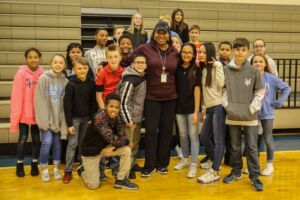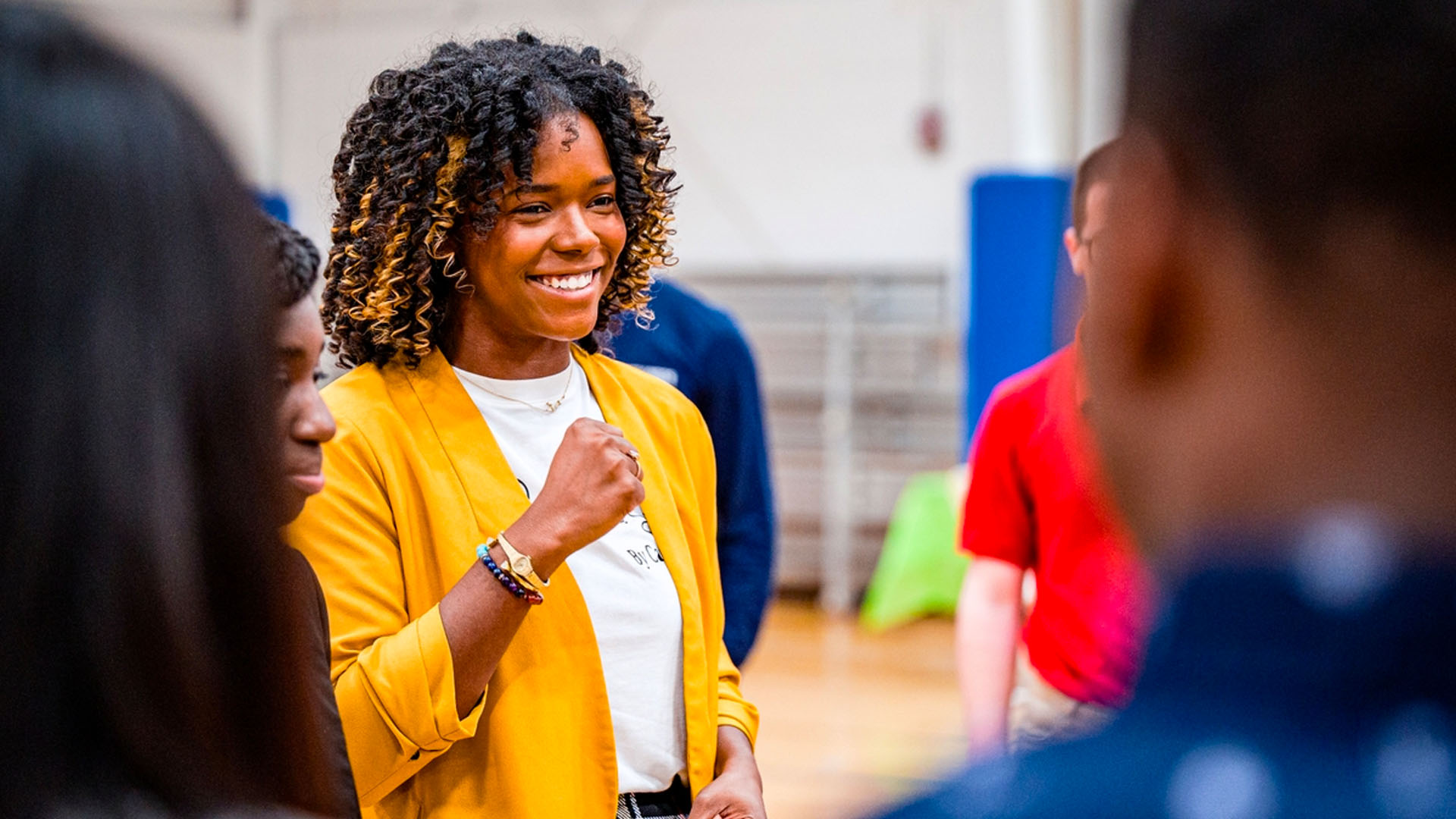Entering into the role of Assistant Principal is a wonderful challenge! Many educational administration programs prepare you for the role of principal, yet most new leaders step into the role of AP first. Educational leadership does not have a Teachers Pay Teachers site to help you generate ideas. Celebrating the role of administrator requires a focus of Admin Help Admin with the area of supporting students. See my collection of tips and links in the slide deck.
Supporting Students is the Why to Having Influence & Legacy
Being a leader requires the ability to reach all students. Students we are concerned about often display their desire for support in the most unloveable ways. Our role is to help support students, collaborate with teachers, and help partner with families to assure growth and wellbeing for our youth. As Ross Greene reminds us, “Challenging kids are not always challenging: they’re challenging only when the expectations placed on them outstrip their skills.” We know as Assistant Principals how we support students matters to our school community. My deepest desire in education is to be a positive influence in the life of children. When we are safe people for students, we have a greater legacy in helping students become the best version of themselves.
“When we are safe people for students, we have a greater legacy in helping students become the best version of themselves.”
Incident Reports
When a concern comes your way, be prepared to have a focused conversation with the student(s). The goal of the conversation is to investigate an incident. Sometimes there is an instigator, target, and witness. You can use this note taking sheet to help you document the process. It usually takes many conversations before you have all the details. The form helps you keep track of all the information you are gathering.
Restorative Conversations
The benefit of a restorative conversation is it places the thinking on the student or student(s). Reflecting on choices allows students to process how to make better decisions in the future. It also leaves space for student(s) to decide how to repair harm or restore relationships. Often teachers miss these moments with their students if an administrator is leading. The note taking sheet allows the administrator to capture the conversation for others to access.
Bully Investigation

Following law and conducting bullying investigations is important work for the safety and well being of students. Districts have protocol and provide guidance and forms to conduct an investigation into behavior. Working with students and families is work which benefits from guidance. When actions are deemed bullying due to meeting the definition of bullying, administrators benefit from guidance. New administrators benefit from resources, Working with the Parents of Bullies and Victims, will help with conversations with victims, student(s) who have targeted others, and all parents. The hardest conversations are the ones related to student conflict where both students were involved in unkind behavior. It can be hard for parents to understand that conflict has occurred when they are focused on the unkindness directed at their child. Navigating these topics with finesse takes time to balance listening and expressing the facts of incidents.
Communication
As we know, education takes a team approach. We need partnership between school and home. At Union Elementary, we often talk about how parents know their children as kids who play, and as educators we know their children as student learners. Educators are relaying back performance along with social emotional development in the scope of peer relationships. Both variations of a child make up a picture of the whole child. When we need to communicate a learning or behavior concern, we must first work within our building team. Administrators, counselors, and teachers are collaborating to work for the best interest of the student. The team is also relaying and building the partnership at home. All of us, when functioning at our best, help a child find the best version of self that can be shared in and out of school.
Close the Loop for Student Growth
- Student
- Sometimes it is best to stay with the student as they transition back to being in the classroom.
- Make sure to go back and check on students. How is it going?
- Teacher
- Make sure to keep the teacher informed. Follow up conversation keeps a team atmosphere.
- Make sure to go back and check on the teacher. How is it going?
- Parents
- Communicate before the student arrives home, if possible, to keep parents informed. We know offering information about the day gives parents the ability to have conversations at home with information from the adults. Some people may have heard the phrase, “Beat the story home.”
- Parents know their child best and sometimes as they discuss events at home, their child will share more information. You can remind parents to reach out if there is any new information to share after talking with their child at home.
- School Counselor
- Keep your counselor informed and allow for additional support for students.
- Counselors may have further options to assist a student with a stressful situation that may be behind the behavior displayed at school.
Relationships Over Time
Working in administration allows you to build relationships with students over time. You have the opportunity to work with students for several grades, especially in an elementary school. Students need space, time, and consistent relationships with key people for the duration of their time in school. Tips for building connection:
- Check Ins
- Make a regular visit to the classroom of a student you are concerned about. You can check and set a positive tone for the day. Some students may want to check in with their teacher and then visit the office to have space to connect. It might even be other teachers who serve in this way for students to have a regular connection.
- Walking
- Help a student by giving them a break by going for a walk around the building. This gives the student time to process and feel heard. You can work with the teacher to schedule a 10 minute walking break at a regular time. Then add this to your Outlook calendar and let the student know you will be there as often as you can. It is helpful to explain there may be times you miss the walk due to another concern in the building or a meeting. Just be as consistent as possible. Movement and conversation go a long way to support a student in daily decisions. Walking helps a student open up.
- Breaks
- Students work towards a reward break that is motivating to them. You can be involved in organizing this activity. There are lots of ideas like playing a game, time playing a sport, time to dance, lunch, or any other activity that a student finds motivating.
- Referrals
- Not all referrals are negative. Use a positive office referral to offer a positive spin on interaction with the office (see example). We make a big deal when a teacher sends a student to the office for a positive referral. We have even witnessed kids go skipping back to class.
Calm Corner: Fidget Library Check Out
In our relationships building with elementary students, we have learned that students enjoy picking out different fidgets from our administrator collections. We are currently working on creating a library for more options for students to pick to take back to their classroom calm corner. The student can return the item(s) and pick different ones for the next day as part of checking in. By making a selection for the class, the student is building skills and empathy for the class too. We know that kids like to have variety and mixing up the items in the classroom calm corner allows it to stay fresh. It also allows for a collection to be developed for circulating to different classroom spaces.
“Kids can grow in the right emotional climate where learning through mistakes is done in a caring manner.”
Supporting Students
Many approaches go into supporting students. The work is emotional due to the bond and relationships we develop as we get to know students. Sometimes it takes time to see progress. We cannot underestimate the power of a fresh start each day. Truly kids who need the most support will thrive through a compassionate community. We can optimize our collaboration and patience as we support the level of need a child displays. Positive relationships must be our priority. Kids can grow in the right emotional climate where learning through mistakes is done in a caring manner. What if on the hard days we imagine the caring dedication being what the child looks back on and appreciates most? Let’s be the team each child deserves to have serving them.
Resources
Please login or register to claim PGPs.
Alternatively, you may use the PGP Request Form if you prefer to not register an account.



